This guide provides essential insights into selecting horse rugs based on temperature, ensuring comfort across Australia’s diverse climate zones. It helps owners choose the right rugs for varying weather conditions.
1.1 Overview of the Importance of Horse Rugs in Australian Climates
Horse rugs are essential for protecting horses from Australia’s diverse and extreme weather conditions, including harsh sun, cold temperatures, and heavy rain. They play a crucial role in maintaining a horse’s comfort and health by regulating body temperature and preventing overheating or chilling. Rugs also shield horses from wind and moisture, which can compromise their natural coat’s insulating properties. Over-rugging is a common issue, highlighting the need to understand horse biology and rug features. Proper rugging ensures horses remain comfortable year-round, adapting to seasonal changes and varying regional climates across Australia.
1.2 Purpose of the Guide
This guide aims to help horse owners navigate Australia’s varied climate by providing temperature-based recommendations for selecting appropriate horse rugs. It addresses common challenges like over-rugging, offering tailored advice for different weather conditions. By understanding horse thermoregulation and rug materials, owners can ensure their horses’ comfort and health. The guide covers regional climate variations, from mild winters to cold, windy, and rainy conditions, ensuring optimal rugging strategies. It emphasizes the importance of balancing insulation, waterproofing, and breathability to maintain horses’ well-being across Australia’s diverse environments.
Understanding Horse Thermoregulation
Horses maintain a core body temperature within a narrow range. A deviation of more than 1°C causes discomfort, making thermoregulation crucial for their health and performance.
2.1 How Horses Maintain Body Temperature
Horses maintain their core body temperature within a narrow range, typically between 37°C and 38°C. They achieve this through various physiological mechanisms. In hot weather, horses sweat to dissipate heat, while in cold conditions, they shiver to generate warmth. Their coat adapts seasonally, thickening in winter and lightening in summer, providing natural insulation. Additionally, horses rely on countercurrent blood flow in their legs to conserve heat. These mechanisms ensure their body temperature remains stable, essential for optimal health and performance. Understanding these processes is crucial for selecting appropriate rugs to support their natural thermoregulation.
2.2 Signs of Discomfort Due to Temperature Extremes
Horses exhibit specific behaviors when uncomfortable due to extreme temperatures. In cold stress, they may shiver, appear stiff, or have cold ears. Their coat hairs may stand on end, indicating an attempt to trap warm air. Conversely, heat stress signs include excessive sweating, rapid breathing, and restlessness. Overheating horses may also seek shade or avoid movement. Monitoring these behaviors helps determine if a rug is necessary or if adjustments are needed. Checking behind the wither and under the rug can reveal if the horse is too hot or cold, ensuring their comfort and well-being in varying conditions.
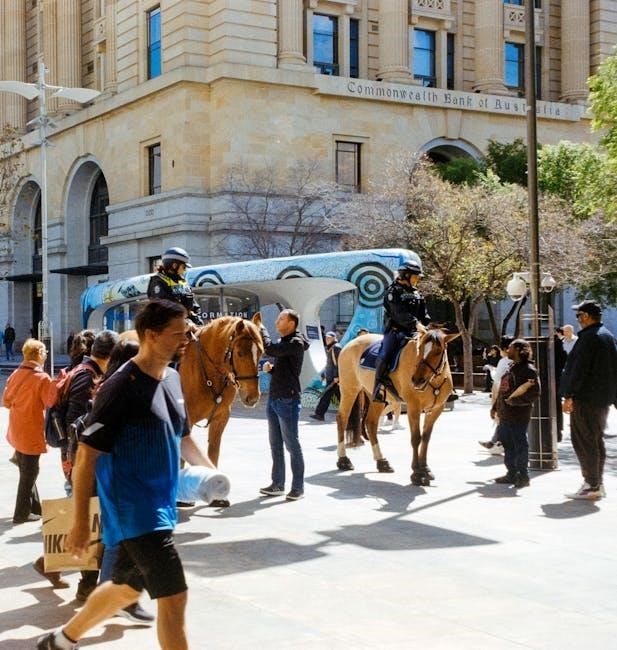
Types of Horse Rugs
Horse rugs are categorized into lightweight, medium-weight, and heavyweight options, each designed for specific temperature conditions to ensure optimal comfort and protection in diverse Australian climates.
3.1 Lightweight Rugs
Lightweight rugs are ideal for mild Australian winters, offering protection from wind and light rain without overheating. They are typically used in temperatures between 10°C and 20°C. These rugs are breathable, preventing moisture buildup, and are perfect for horses with full winter coats. They often feature waterproof properties, making them versatile for rainy conditions. Lightweight rugs are a popular choice for spring and autumn, providing a layer of comfort without excessive insulation. They are especially suitable for clipped horses that need extra protection but are prone to overheating in heavier rugs.
3.2 Medium-Weight Rugs
Medium-weight rugs are designed for cooler conditions, typically used when temperatures range from 5°C to 10°C. They provide adequate insulation while maintaining breathability, making them ideal for both dry and rainy weather. These rugs are suitable for horses that need more warmth than lightweight options offer but do not require heavy insulation. They are often waterproof and feature fill levels up to 250g, ensuring comfort without overloading the horse. Medium-weight rugs are a versatile choice for many Australian regions, offering a balance between warmth and flexibility for varying climate conditions.
3.3 Heavyweight Rugs
Heavyweight rugs are designed for extreme cold, typically used when temperatures drop below 0°C. These rugs offer maximum insulation, often with fill levels up to 300g, making them ideal for harsh winter conditions. They are usually waterproof and feature robust materials to withstand rain and wind. Heavyweight rugs are essential for unclipped horses in freezing temperatures or those exposed to prolonged cold. However, they should be removed during warmer parts of the day to prevent overheating. Proper fitting is crucial to ensure comfort and avoid restricting movement.
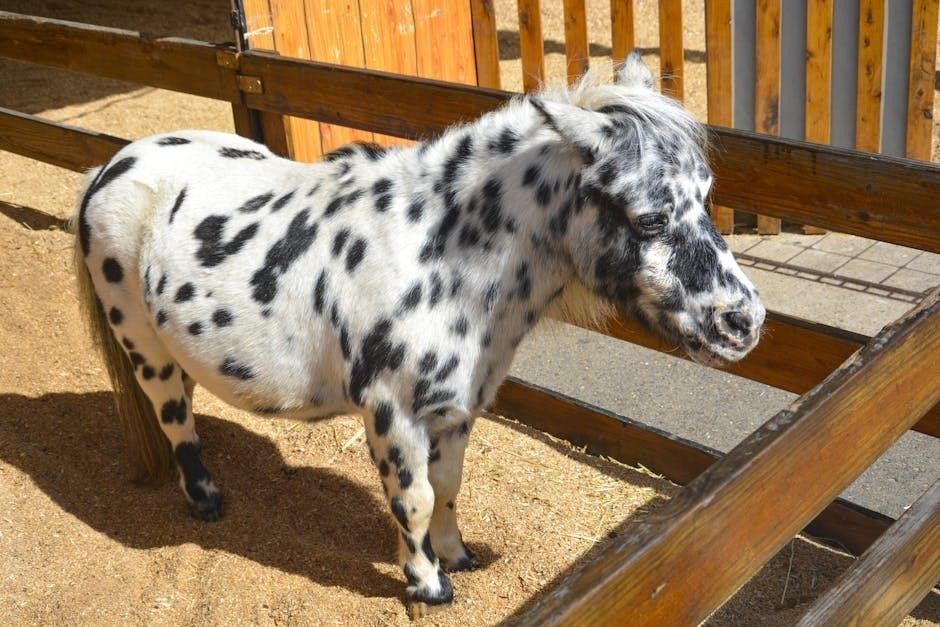
Layering Rugs for Optimal Comfort
Layering rugs offers flexibility, allowing adjustment to varying temperatures and conditions. It ensures horses remain comfortable without overheating, adapting to Australia’s unpredictable climate effectively.
4.1 Benefits of Layering
Layering horse rugs provides adaptability, allowing adjustments to suit changing weather. It prevents overheating by enabling quick removal of excess layers. This method also allows the horse’s coat to breathe, reducing moisture buildup. During colder nights, adding heavier rugs ensures warmth, while lighter layers can be removed during warmer days. This approach minimizes the risk of over-rugging, which can cause discomfort and stress. By giving owners the flexibility to customize their horse’s protection, layering enhances overall comfort and maintains the horse’s natural thermoregulation processes more effectively.
4.2 How to Layer Rugs Effectively
Effective layering starts with a breathable base layer, such as a lightweight cotton or mesh rug, to wick moisture and prevent skin irritation. Next, add a medium-weight rug for insulation, ensuring it fits comfortably without restricting movement. For colder conditions, a heavyweight or waterproof rug can be layered on top. Always monitor your horse’s comfort, adjusting layers based on temperature and humidity. Avoid over-layering, as this can cause overheating. Regularly check for signs of discomfort, such as sweating or restlessness, and remove layers as needed to maintain optimal comfort and prevent stress.

Recognizing When Your Horse is Too Cold or Hot
Monitor for signs like shivering, cold ears, or stiffness for cold stress, and sweating, rapid breathing, or restlessness for heat stress, ensuring timely adjustments to rugging.
5.1 Signs of Cold Stress
Horses exhibiting cold stress may shiver, appear stiff, or have cold ears and a raised hair coat. Check by placing your hand behind the wither under the rug; if it feels chilly, your horse may need a warmer rug. Clipped horses are more sensitive to cold and require closer monitoring. Ensure timely adjustments to prevent discomfort and potential health issues. Recognizing these signs early helps maintain your horse’s well-being during colder months.
5.2 Signs of Heat Stress
Horses experiencing heat stress often display excessive sweating, an increased respiratory rate, and restlessness. They may also seek shade or show signs of lethargy. It’s crucial to monitor these signs and adjust their rugging to prevent overheating, especially during sunny days. Removing rugs or providing shade can help mitigate heat stress and prevent more severe conditions like heatstroke. Additionally, ensuring your horse has access to plenty of fresh water aids in maintaining hydration and overall comfort in warmer climates effectively.
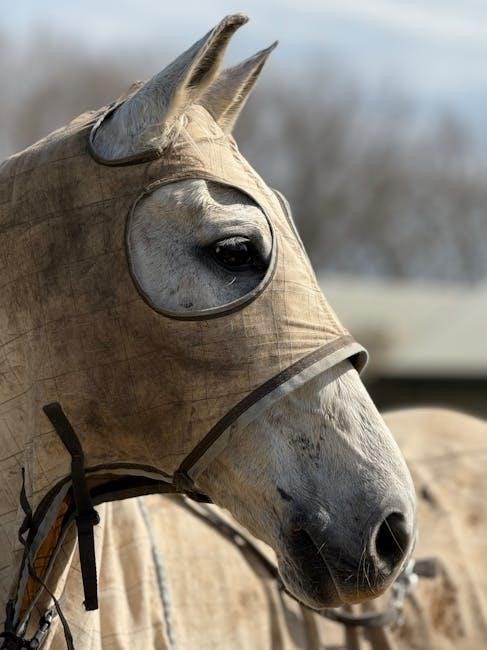
The Role of Waterproofing in Horse Rugs
Waterproofing is crucial for protecting horses from rain and humidity, ensuring they stay dry and comfortable in wet conditions, particularly during Australia’s rainy seasons.
6.1 Importance in Rainy Conditions
Waterproof rugs are vital in rainy conditions to prevent horses from becoming soaked and chilled. They protect the coat from moisture, maintaining body warmth and preventing discomfort. In Australia’s wet seasons, heavy rain can quickly drench a horse, risking hypothermia. Waterproof rugs, such as those with synthetic fills or specialized linings, ensure the horse stays dry. This is especially important for clipped horses, which are more sensitive to cold and wet conditions. Regularly checking and changing rugs during prolonged rain ensures optimal comfort and health for the horse.
6.2 How to Maintain Waterproof Rugs
Regular maintenance is crucial to preserve the waterproofing of horse rugs. Start by washing the rug with mild detergent, avoiding harsh chemicals that can damage the waterproof coating. Allow the rug to air dry completely, avoiding direct sunlight, which can degrade the material. Store the rug in a cool, dry place when not in use. For optimal performance, reproof the rug annually or as needed, using specialized waterproofing treatments. Proper care ensures the rug remains effective in protecting your horse from rain and moisture, maintaining its comfort and health during wet conditions.
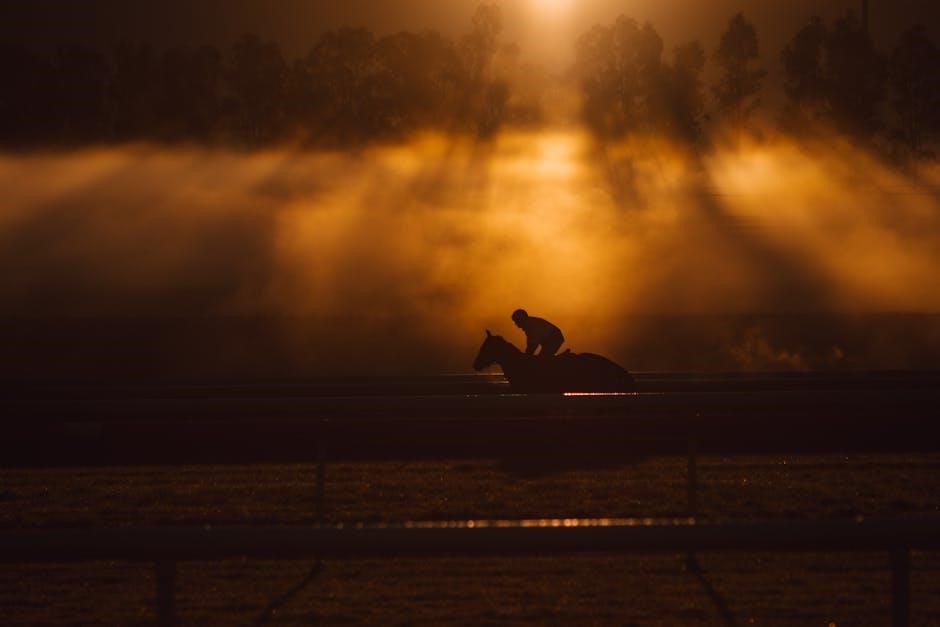
Environmental Factors Influencing Rug Choice
Humidity, wind chill, and rainfall significantly impact rug selection, as they alter a horse’s comfort levels. These factors require tailored rugging solutions to ensure optimal thermoregulation and protection.
7.1 Humidity Levels
High humidity can trap moisture, making horses feel warmer and increasing the risk of overheating. In such conditions, breathable rugs are essential to prevent sweat buildup and discomfort. Humidity also affects insulation, as damp air reduces the effectiveness of a horse’s natural coat. For clipped horses, humidity can exacerbate cold sensitivity, necessitating careful rug selection. In rainy or humid climates, waterproof and moisture-wicking materials are crucial to keep horses dry and comfortable. Monitoring humidity levels helps determine the appropriate rug weight and type, ensuring horses remain thermoregulated without over-insulating.
7.2 Wind Chill
Wind chill significantly impacts a horse’s comfort, making the air feel colder than the actual temperature. In windy conditions, horses lose heat faster, especially in colder climates. Lightweight rugs or rain sheets are ideal for wind protection without overheating. However, in extreme cold, medium-weight rugs may be necessary. It’s crucial to monitor your horse’s comfort, as excessive wind chill can lead to shivering and discomfort. Ensure rugs are breathable and well-fitted to prevent rubbing. Regional variations in wind patterns across Australia mean tailored rugging strategies are essential for different areas. Always prioritize your horse’s ability to maintain a stable body temperature.
7.3 Rainfall
Rainfall plays a crucial role in determining the appropriate horse rug. Waterproof rugs are essential to prevent soak-through, which can chill a horse quickly. In rainy conditions, especially when temperatures are low, a waterproof rug helps maintain body heat. However, humidity from rain can sometimes make it better to leave a horse unrugged if the coat becomes sweaty. Regularly checking and changing rugs in wet weather is vital to prevent discomfort. Synthetic rugs with fill are recommended for their waterproofing and warmth. Always consider both rainfall and temperature when selecting the right rug for your horse’s comfort in Australia’s diverse climate zones.

When Not to Use a Horse Rug
Understanding when to avoid rugging is crucial for your horse’s comfort. Over-rugging can disrupt natural temperature regulation, especially in mild or sunny conditions, risking overheating and discomfort.
8.1 Temperature Thresholds for Not Rugging
Avoid rugging when temperatures exceed 25°C, as horses naturally regulate heat. In mild weather, 10°C to 20°C, rugs are unnecessary unless conditions are windy or wet. Overheating risks arise when rugs trap excess warmth, potentially causing discomfort. Always consider humidity and wind chill, as these factors can lower the effective temperature. For unclipped horses, no rug is needed above 5°C, while clipped horses may require lighter options. Monitoring your horse’s behavior and environment ensures optimal comfort without over-rugging.
8.2 Monitoring in Mild Weather
Monitoring your horse in mild weather is crucial to avoid overheating. Check temperature, humidity, and wind conditions daily. If temperatures remain above 10°C with low humidity, rugs may not be needed. Remove rugs during sunny days to prevent heat buildup, especially if your horse is clipped or sensitive. Reintroduce rugs at night if temperatures drop significantly. Observe your horse’s behavior for signs of discomfort, such as sweating or restlessness. Adjust rugging based on these cues to ensure comfort and prevent stress. Mild weather requires careful observation to balance protection and natural thermoregulation.

Choosing the Right Rug
Selecting the right rug involves considering fit, material, and breathability. Ensure proper sizing for comfort and mobility. Opt for materials that suit your horse’s needs and climate conditions.
9.1 Fit and Sizing
Proper fit and sizing are crucial for your horse’s comfort and mobility; A rug that is too tight can restrict movement, while one that is too loose may shift or rub. Always check the size chart and ensure the rug fits snugly around the chest, shoulders, and hindquarters. Adjustments should allow for a full range of motion. Regularly monitor your horse’s condition, as weight changes or muscle development can affect fit. A well-fitting rug ensures even weight distribution and prevents discomfort or injury, making it essential for your horse’s overall well-being in varying Australian climates.
9.2 Material Types
Choosing the right material for your horse rug is vital for comfort and durability. Common materials include polyester, nylon, and canvas, each offering varying levels of breathability and water resistance. Waterproof rugs are ideal for rainy conditions, while breathable fabrics like mesh are perfect for warmer climates. Thermal materials provide insulation during colder months, and lightweight options are suitable for mild weather. Synthetic rugs are durable and easy to clean, making them a popular choice. Natural fibers, though less common, offer unique benefits. The right material ensures your horse stays comfortable, whether facing rain, wind, or heat in Australia’s diverse conditions.
9.3 Breathability
Breathability in horse rugs is crucial for maintaining your horse’s comfort and preventing overheating. Look for rugs with moisture-wicking fabrics that allow sweat to evaporate, reducing the risk of skin irritation. Mesh panels and lightweight materials enhance airflow, especially in warmer conditions. Proper breathability helps regulate body temperature, preventing heat stress. Rugs designed with breathable layers ensure your horse stays cool and dry, whether in humid or sunny environments. This feature is particularly important in Australia’s varied climate, where temperature fluctuations can be significant. Prioritizing breathability ensures your horse remains comfortable and healthy year-round.
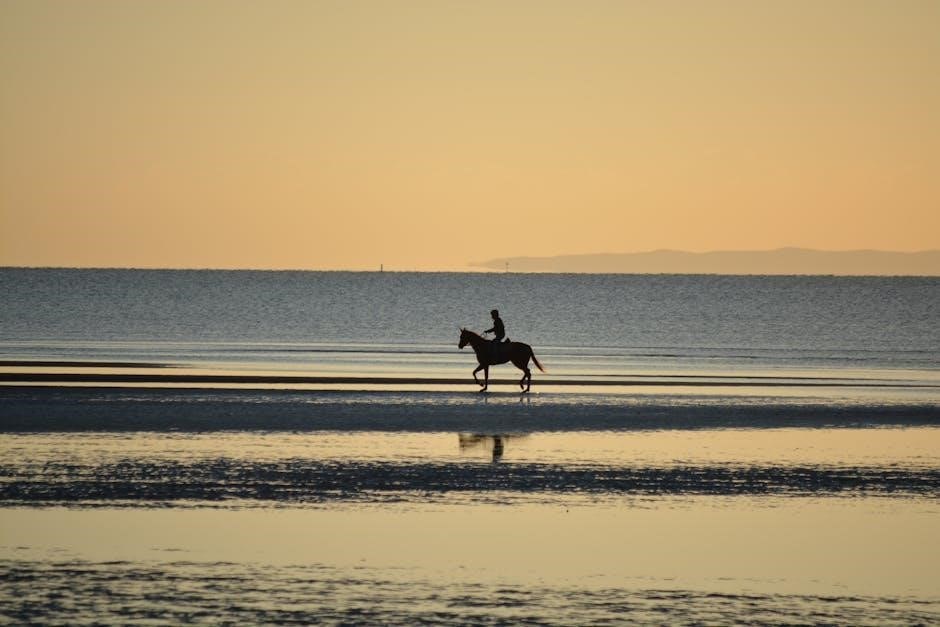
Managing Rugs During Sunny Days
Remove heavy rugs during sunny days to prevent overheating. Use lightweight, breathable rugs or rain sheets for wind protection without trapping heat, ensuring your horse stays comfortable.
10.1 Risks of Overheating
Overheating can lead to serious health issues for horses, including heat stress and dehydration. Rugs trap warmth, and on sunny days, this can cause a horse’s body temperature to rise dangerously. Horses may exhibit signs such as excessive sweating, rapid breathing, or restlessness. If not addressed, prolonged overheating can lead to heat exhaustion, which may require veterinary intervention. It is crucial to monitor weather conditions and adjust rugs accordingly to prevent these risks and ensure the horse’s comfort and well-being.
10.2 Tips for Daytime Rug Management
Effective daytime rug management is essential to prevent overheating. Remove heavy rugs during sunny hours to allow horses to regulate their body temperature naturally. Use lightweight or breathable rugs instead, offering protection without excessive heat retention. Monitor weather changes and adjust rugs accordingly; if rain is forecast, opt for waterproof options. Regularly check your horse’s comfort, ensuring rugs are not causing sweating or discomfort. Adjusting rugs based on temperature fluctuations ensures optimal comfort and prevents heat-related stress, keeping your horse healthy and thriving year-round.
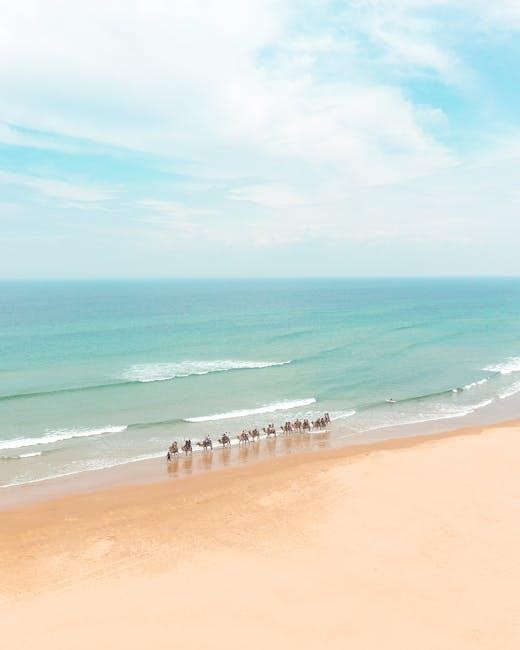
Regional Climate Considerations
Australia’s diverse climates require tailored rugging strategies, from mild southern winters to tropical northern conditions, ensuring horses remain comfortable in varying regional weather patterns across the country;
11.1 Southern Regions
In southern Australia, colder winters necessitate medium to heavyweight rugs, especially in temperatures below 10°C. Humidity and wind chill can exacerbate cold stress, making waterproof and breathable fabrics essential. Horses in these regions may need layered rugging during particularly harsh conditions. Monitoring temperature fluctuations is crucial, as southern areas can experience sudden drops. Clipped horses may require additional insulation to prevent discomfort. Ensuring rugs are well-fitted and moisture-wicking helps maintain warmth without causing overheating. Regular checks on rug condition and fit are vital to keep horses comfortable throughout the southern winter months.
11.2 Northern Regions
Northern Australia experiences milder winters, with temperatures rarely dropping below freezing. Lightweight rugs are often sufficient, except during cooler nights when medium-weight options may be needed. Humidity levels can be high, so breathable fabrics are crucial to prevent moisture buildup. Horses in these regions may still require protection from wind and rain, but overheating is a risk during warmer days. Layering rugs can provide flexibility, allowing adjustments as temperatures fluctuate. Monitoring your horse’s comfort is essential, as northern regions’ mild winters can still pose challenges due to unpredictable weather patterns and high humidity levels.
11.3 Coastal Areas
Coastal regions in Australia experience mild winters but high humidity and strong winds. Horses may need lightweight rugs for wind protection, especially at night. Waterproof rugs are essential during rainy periods to keep horses dry. High humidity can lead to skin issues if rugs trap moisture, so breathable materials are recommended. Layering rugs can help adapt to fluctuating temperatures. While temperatures rarely drop significantly, consistent rainfall and wind necessitate proper rugging to maintain comfort. Coastal areas require a balance between protection from the elements and preventing overheating, ensuring your horse remains comfortable throughout the season.
Special Needs for Clipped Horses
Clipped horses are more sensitive to cold and temperature extremes, requiring extra care in rugging. Their reduced coat means they need more insulation, especially in cooler conditions.
12.1 Increased Sensitivity to Cold
Clipped horses experience heightened sensitivity to cold due to their reduced natural insulation. Their thinner coats make them more susceptible to dropping temperatures, requiring earlier and more frequent rugging. Even at moderate temperatures, clipped horses may need additional layers to stay comfortable, especially in windy or humid conditions. Owners should monitor their horse’s comfort closely, as clipped horses can quickly become chilled, leading to discomfort or health issues. Rugging thresholds for clipped horses often start at higher temperatures compared to unclipped horses, ensuring their thermoregulatory needs are met effectively in cooler Australian climates.
12.2 Managing Rugs for Clipped Horses
Managing rugs for clipped horses requires careful consideration of temperature, humidity, and wind chill. Start with lightweight rugs at higher temperatures and gradually increase weight as it gets colder. Layering is effective, allowing adjustment based on conditions. Ensure rugs are breathable to prevent moisture buildup, which can chill the horse. Regularly check for signs of discomfort, such as shivering or tenseness. Change rugs as needed, especially after exercise or in wet conditions. Tailor your approach to the horse’s specific needs, as over-rugging can lead to overheating during warmer parts of the day in Australia’s variable climate.
Expert Tips for Horse Rugging
Layer rugs to adjust to changing temperatures and monitor your horse’s comfort. Ensure proper fit and breathability to prevent overheating or chilling, optimizing seasonal comfort effectively.
13.1 Seasonal Adjustments
Seasonal adjustments are crucial for maintaining your horse’s comfort. During autumn and winter, introduce lightweight rugs as temperatures drop, gradually increasing weight as it gets colder. In spring, reduce layers to prevent overheating. Summer typically requires lightweight or no rugs, depending on humidity and wind. Always consider your horse’s coat and local climate variations. For clipped horses, start with medium-weight rugs earlier in the season and adjust based on their sensitivity to cold. Regularly monitor weather changes and your horse’s comfort to ensure optimal rugging throughout the year.
13.2 Monitoring Horse Comfort
Monitoring your horse’s comfort is essential to ensure their well-being. Check for signs of discomfort, such as shivering, cold ears, or stiffness. Place your hand under the rug at the neck to gauge warmth. If your horse feels overly cold or sweaty, adjust the rugging. Observe behavior: a relaxed horse is comfortable, while a tense or restless horse may need attention. Regularly inspect rugs for fit and condition. Adjustments should be made based on temperature fluctuations, humidity, and wind chill. Consistent monitoring ensures your horse remains comfortable and healthy throughout the seasons in Australia’s varied climate.
This guide provides a comprehensive approach to understanding horse rugging in Australia’s diverse climate. By considering temperature, humidity, wind, and rainfall, owners can make informed decisions to ensure their horse’s comfort. Proper rugging prevents overheating, cold stress, and discomfort, while also protecting against elements like rain and sun. Regular monitoring and adjustments are crucial, as over- or under-rugging can harm your horse’s well-being. Use this guide to tailor your rugging strategy, keeping your horse healthy and comfortable in all conditions. Remember, every horse is unique, so adapt these recommendations to meet their specific needs and your local climate.
